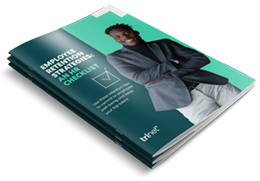3 Steps You Can Take to Reduce Bias and Become a Better Decision-Maker

Table of contents
- 1.Establish a process
- 2.Identify the problem
- 3.Establish criteria
- 4.Weigh the criteria
- 5.Become aware of your biases
- 6.Pay attention to how you feel
Illustration via Weronika Mikulska Whether you’re a seasoned manager with years of experience or someone who is relatively new to the leadership role, improving your ability to make effective decisions should be a top priority. After all, how effective you are at making decisions has implications for nearly every facet of your business. For example — perhaps you are looking to improve your selection and recruitment process, decide on a more transparent and fair promotion policy, or need to determine an appropriate way to roll out a new change initiative. Regardless of the decision, reducing the intrusion of bias impacts your arrival at finding the best possible solutions. Here are 3 simple techniques you can begin adopting right away that can help you become a more effective decision-maker.
Establish a process
The scientific method has been a cornerstone of science since the 17th century. As a process, it continues to be the prevailing method for scientific discovery and idea testing due to its usefulness in minimizing bias. Likewise, following a process when making decisions can help reduce bias and improve decision-making effectiveness. Although decision-making processes can vary to some degree, for the most part they all contain some fundamental elements. Below are a few steps you should follow if you’re looking to minimize bias and improve your overall decision-making ability.
The ability to change one’s prior beliefs or assumptions in light of opposing evidence is crucial for effective decision-making.
Identify the problem
The first step involves clearly defining the problem you’re trying to solve. For example, suppose you are trying to fill a vacant position and want to ensure the person you ultimately hire is best suited for the job. Let’s use this scenario for the following 2 steps.
Establish criteria
Next, decide on the criteria that will be important for solving the problem. You’ll want to identify the standards by which you can judge whether you have an ideal candidate for the position. For instance, you may feel that strong communication skills, the ability to work independently, and relevant work experience are important qualities needed for this position. If so, be sure to include these before you begin searching for candidates. Failing to do so could cause you to focus on irrelevant characteristics later in the process.
Weigh the criteria
Odds are, some of the criteria you listed in the previous step will be more important than others. You may decide that relevant work experience is more important than strong communication skills. Understanding where you stand on these criteria can help you avoid focusing too much on less relevant qualities at a later stage in the process, such as succumbing to the allure of a highly charismatic yet underqualified interviewee. From here, you can then begin to generate alternatives such as selecting candidates to interview, analyze these alternatives based on the criteria you’ve already established, select the one that best fits this criteria, and finally evaluate the effectiveness of your final choice.
Become aware of your biases
Although establishing a decision-making process can help minimize the intrusion of bias, you can never fully eliminate biases from your decisions. Some of the biases that emerge when we make decisions are evolutionarily programmed into us. But you can still help keep your biases in check by being aware of them. There are numerous biases that can hinder effective decision-making (here’s a list of some of the most common). For example, one bias that everyone will encounter at one point or another is confirmation bias, or the tendency to favor information that conforms to one’s prior beliefs. The ability to change one’s prior beliefs or assumptions in light of opposing evidence is crucial for effective decision-making. But it can also be extremely uncomfortable, especially when you’re emotionally or financially invested in a particular viewpoint. Yet, those beliefs in which we find ourselves heavily invested (whether emotionally, financially, or otherwise) are the very ones we should question. If we never consider the alternatives of our beliefs, it could hold us back from being unbiased and making better decisions. Fortunately, there are a few techniques you can apply to safeguard yourself against confirmation bias. Some examples include:
- Playing devil’s advocate with your own ideas
- Imagining yourself holding the opposite viewpoint to the one you currently have
- Actively seeking information that disconfirms or counters your current perspective
Pay attention to how you feel
One final technique that can help you minimize bias in your decisions is to become aware of and actively manage your emotions when making choices. People often assume that emotions inherently cloud our thinking, predisposing us to unwanted bias and rendering our decisions less effective. While there might be some truth to this, it is only part of the story. Research has shown that experiencing intense feelings when making decisions can actually improve attention, memory, and creativity, processes that are crucial for effective decision-making. But as this research suggests, in order to channel such feelings in ways that help — rather than hinder — decision-making, it is important to regularly monitor and manage your emotional experience for the intrusion of biases that often coincide with such intense emotions. While it is unreasonable to assume that we can completely eliminate bias from all of our decisions, following the steps outlined here can help you minimize their occurrence and determine the best solutions for your problems.
This article is for informational purposes only, is not legal, tax or accounting advice, and is not an offer to sell, buy or procure insurance. TriNet is the single-employer sponsor of all its benefit plans, which does not include voluntary benefits that are not ERISA-covered group health insurance plans and enrollment is voluntary. Official plan documents always control and TriNet reserves the right to amend the benefit plans or change the offerings and deadlines.
This article may contain hyperlinks to websites operated by parties other than TriNet. Such hyperlinks are provided for reference only. TriNet does not control such web sites and is not responsible for their content. Inclusion of such hyperlinks on TriNet.com does not necessarily imply any endorsement of the material on such websites or association with their operators.

Joel Carnevale
Table of contents
- 1.Establish a process
- 2.Identify the problem
- 3.Establish criteria
- 4.Weigh the criteria
- 5.Become aware of your biases
- 6.Pay attention to how you feel





